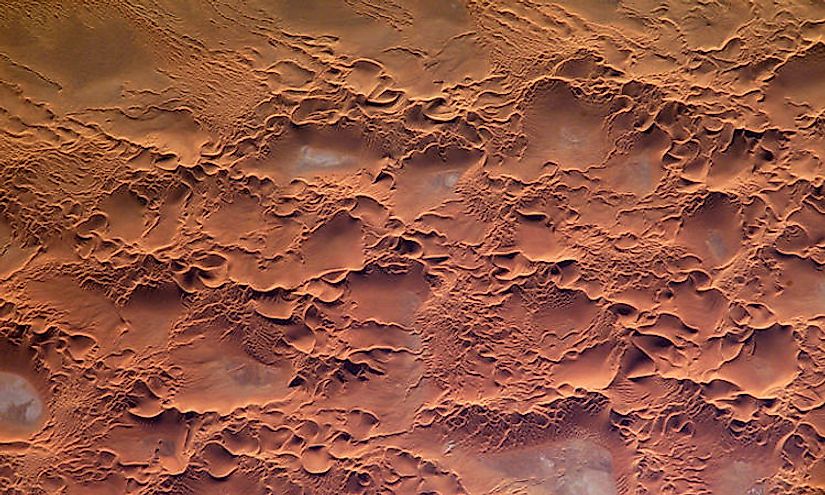Aeolian Landforms: What Is An Erg?

Aeolian Landform: What Is An Erg?
An erg is a flat area of a desert covered by windblown sand that could be more than 125 square kilometers of Aeolian or windblown sand with little or no vegetative cover.Ergs are mostly found in the Sahara desert where Issaouane Erg and Chech Erg are found in Algeria. About 85% of all mobile sand belonging to the Earth is found in ergs that are bigger than 32,000 square kilometers. Ergs can also be found in other planetary bodies like the Titan Saturn, Venus, and Mars.
Where Are Ergs Found?
Active ergs are mostly found in regions that receive an average precipitation of less than 150 millimeters per year. The largest ergs in the world are mostly found in the southern and northern regions of Africa, Central Australia and Western Asia. The ergs of South America are majorly restricted by the Andes Mountains however there exist humongous dunes in the northwestern region of Argentina, coastal Peru and some parts of the northwestern coast of Brazil. Gran Desierto de Altar is the only erg that is active in North America extending from the Mexican state of Sonora in the Sonora desert to Arizona in the Yuma Desert and to the Algodones Dunes of southeastern Carolina.
The Size Of Ergs
A regular sized erg can cover about 48 square miles whereas a large erg can stretch up to tens of thousands of square miles. Most if not all ergs are situated downwind from riverbeds in extremely dry areas that are incapable of supporting extensive vegetation cover and are therefore prone to consistent erosion caused by wind.
How Are Ergs Formed?
Ergs are formed when sand from abundant sources move downwind and build up into humongous dunes and its movement is slowed down or halted by geological barriers to the flow of wind or by concurring wind flow. An entire erg migrates downwind to distances as far as hundreds of kilometers from the source of their sand thus making their accumulation to take very long periods. The time period to which ergs built from very large dunes are formed is around a million years such as those found in Central Asia and the Arabian Peninsula ergs of North Africa.
Composition Of Ergs
Ergs can be of immense thickness or linear depending on the topography of the region, for instance ergs such as the Murzuk Sand Sea are thicker compared to ergs formed from linear dunes such as the ones on the Great Sandy Desert and the Simpson Desert. Ergs and dunes tend to be of the same type in regards to the sand sea of a given region, for instance there are certain regions whose ergs are of crescentic dunes, parabolic dunes, linear dunes and star dunes. Such dunes tend to maintain consistent sizes and orientation.
The Characteristics Of Ergs
Naturally, ergs tend to be very active as smaller dunes are formed and migrate along sand ridges beside the larger dunes. Once in a while precipitation takes place filling the basins formed by dunes and as the water evaporates salt deposits are left behind. Individual dunes that form ergs have a typical width and length of more than 500 meters. Ergs are differentiated from dune fields by their great size, the regional extent to which their sand covers, and the complexity of their dunes. Different ergs have different depth of sand ranging from a few centimeters in depth to about 1 meter or 21-43 meters deep such as in the Selima Sand Sheet of Egypt, the Simpson Desert and in the Sahara Desert.











